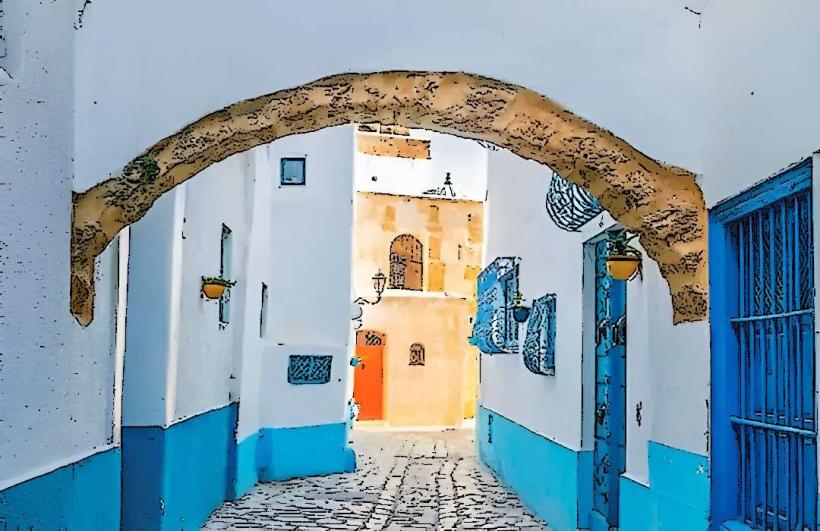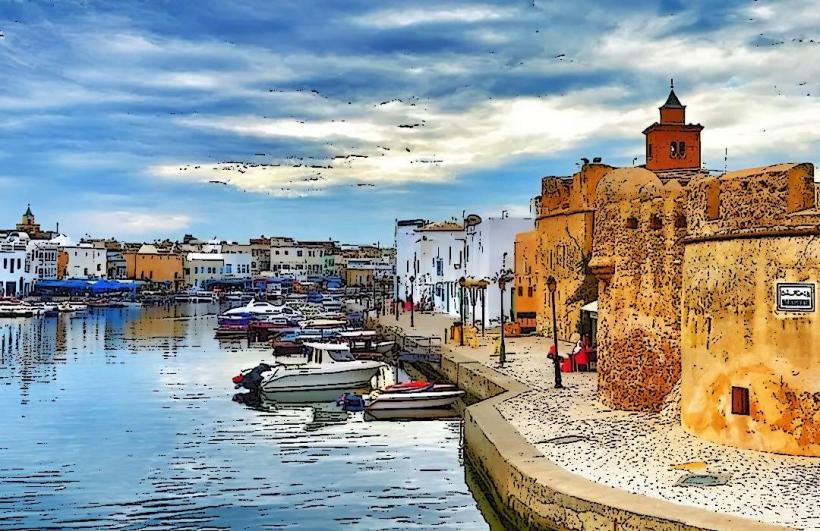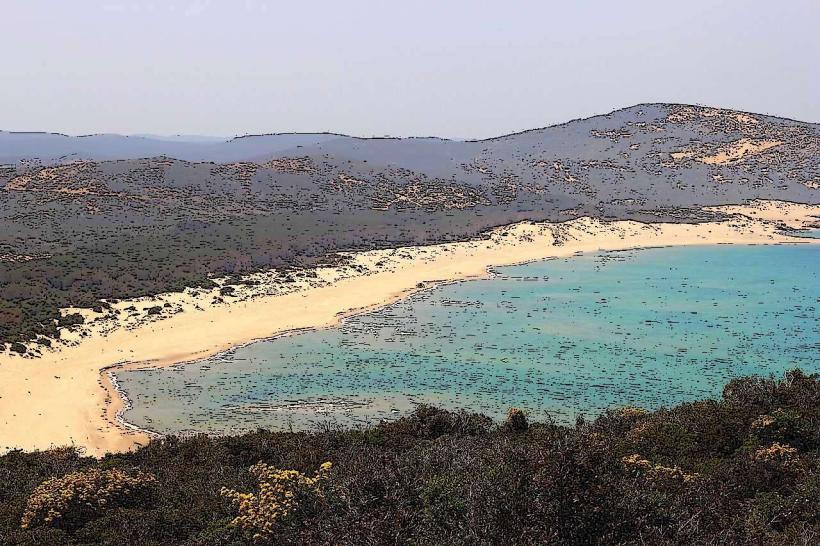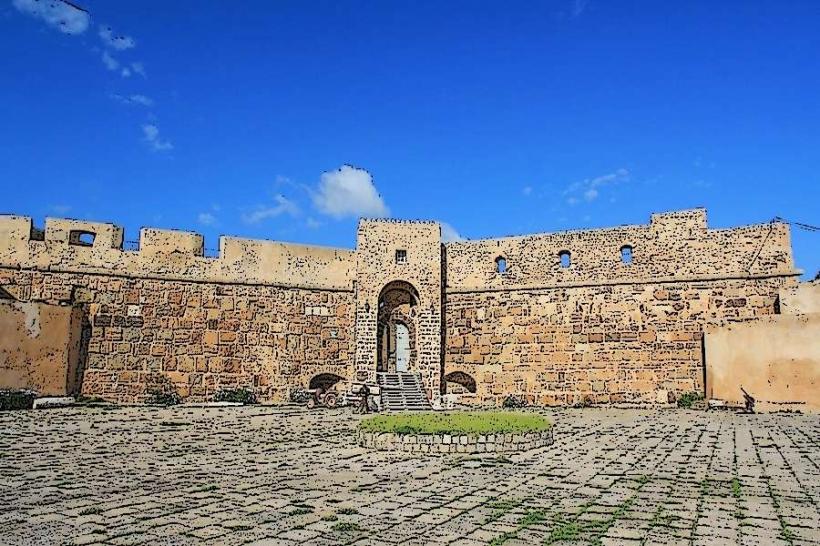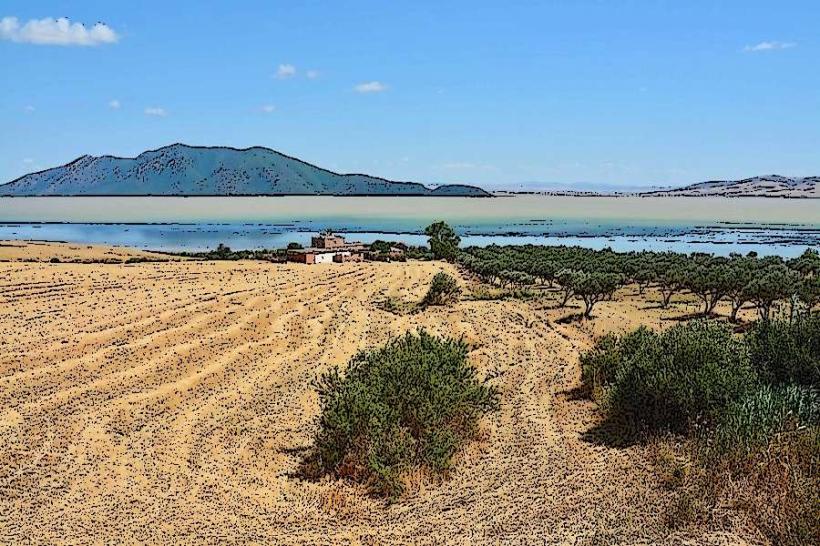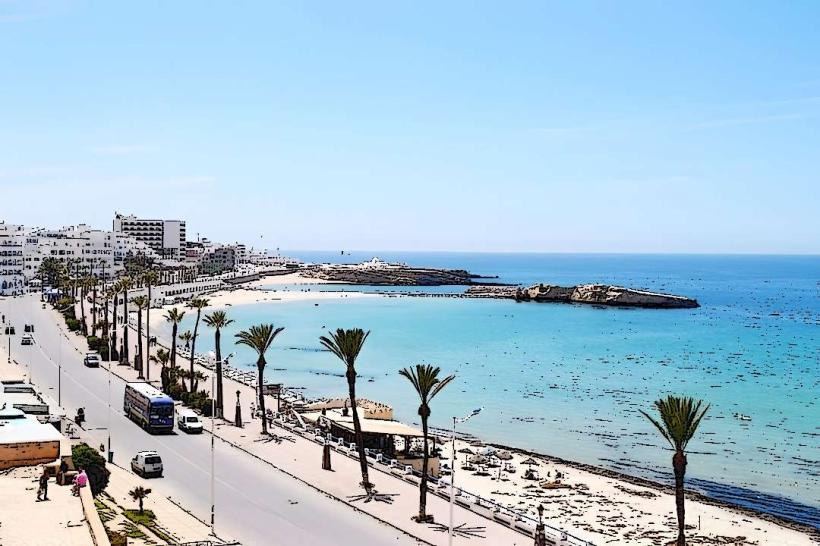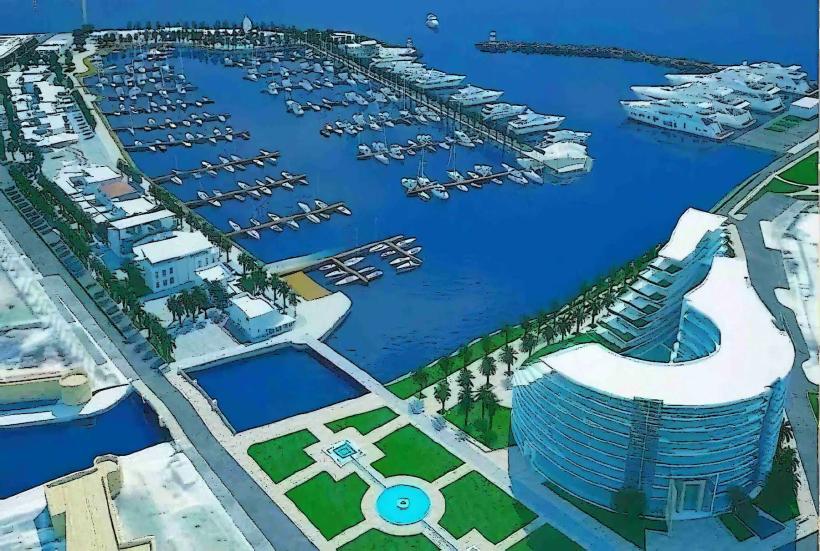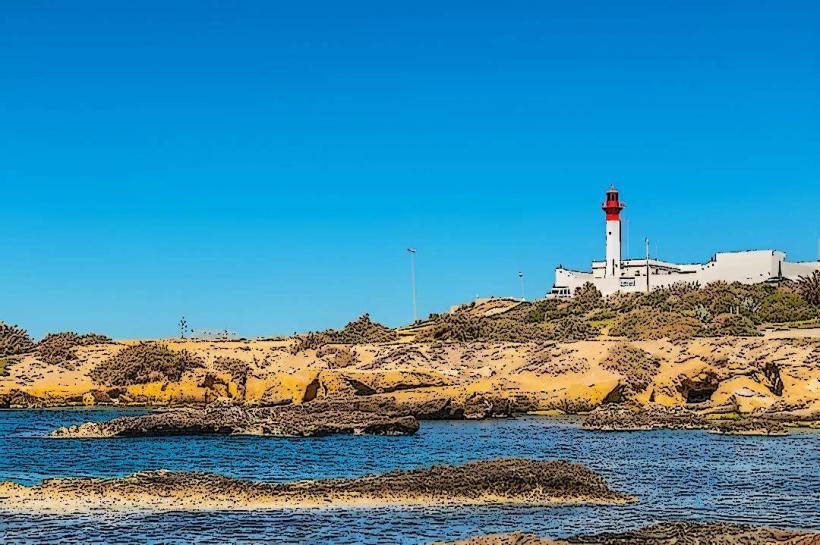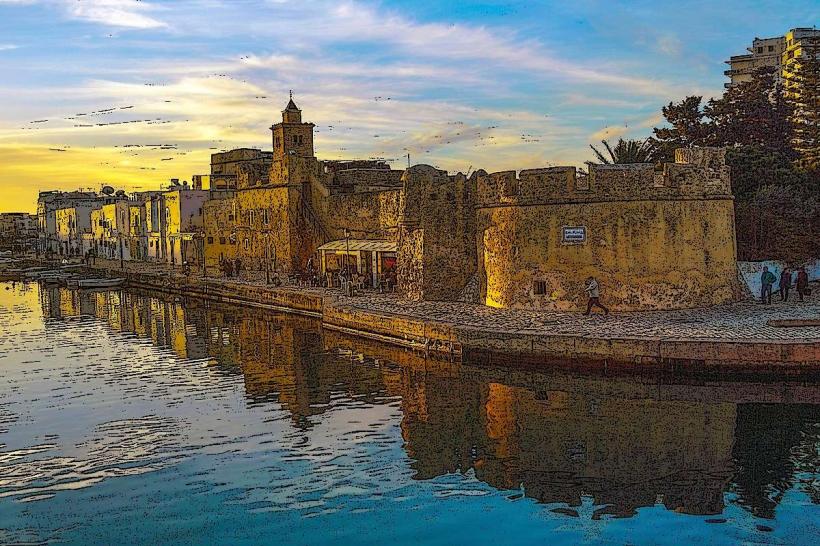Information
Landmark: Wetland Museum of Ghar El Melh (Dar El Bhira)City: Bizerte
Country: Tunisia
Continent: Africa
Wetland Museum of Ghar El Melh (Dar El Bhira), Bizerte, Tunisia, Africa
Overview
The Wetland Museum of Ghar El Melh (Musée des Zones Humides de Ghar El Melh) sits in the quiet coastal town of Ghar El Melh in Tunisia’s Bizerte Governorate, about 60 kilometers northwest of Tunis, where the scent of saltwater drifts in from the nearby shore, at the same time the museum celebrates the ecological, historical, and cultural value of wetlands, with a special focus on the nearby Ghar El Melh Lagoon-a Ramsar-protected site where herons glide low over the water.The museum sits inside Borj El Loutani, a sturdy Ottoman fort built in 1659 under Yusuf Dey’s rule, its stone walls still cool to the touch after centuries, and the fortress first housed soldiers and cannons, then stood as a prison until 1964.Work on restoring the site started in the 1990s, and on April 25, 2013, the museum opened its doors under a joint effort between Tunisia’s environmental agencies and international conservation groups, as a result borj El Loutani sits close to the lagoon’s edge, just a short stroll from the town’s heritage stone port.This spot carries both symbolic weight and strategic value-it ties together the region’s military history, its fragile wetlands, and its long maritime tradition, equally important the Wetland Museum works to spark awareness of wetlands’ ecological importance, teach visitors about the environment, and inspire a spirit of conservation in locals and travelers alike-whether through a hands‑on touch tank or a quiet stroll by the reeds.Its scope reaches far past Ghar El Melh, capturing Tunisia’s wide sweep of wetlands-from still blue lakes to reed-choked marshes, shimmering lagoons, and winding river deltas, consequently the museum doubles as a hub for science and culture, drawing in students, environmentalists, and curious travelers eager to explore sustainability, biodiversity, and how people connect with life in the water-like the shimmer of fish beneath a sunlit surface.The museum stretches across two main halls, with displays filling the space, and outside you’ll find interpretation panels catching the light in the open air, what’s more in the First Exhibition Hall, you’ll find Wetland Systems and Biodiversity-maps with soft blue rivers winding through Tunisia, alongside detailed models showing how wetlands are spread across the Mediterranean.Wetland types: colorful displays show coastal lagoons, salt marshes, seasonal lakes, and reed beds, with one panel describing the whisper of wind through tall reeds, along with migratory birds are showcased on panels filled with life‑size models, vivid photos, and details about species that pause or nest in Ghar El Melh-flamingos with pink feathers, tall herons, and elegant storks.Flora and fauna come alive here with specimens and dioramas-silver fish flashing mid-swim, sleek amphibians, delicate mollusks, and vivid aquatic plants, subsequently here, you’ll find a model of Ibn Chabbat’s ancient water distribution system, once used to guide streams through the sunbaked fields of southern Tunisia, under certain circumstances In the Second Exhibition Hall, the spotlight falls on the cultural and local heritage of the Ghar El Melh lagoon, a Ramsar wetland since 2007, alive with shimmering waters and rich biodiversity, on top of that corsair Legacy: Step aboard a slight, weathered pirate ship installation and feel the creak of its wooden deck as you explore the town’s maritime past, when it was a bustling base for Ottoman-era privateers.Historic tools, faded photographs, and tiny models bring to life traditional fishing methods like charfia, where palm fronds are woven into clever traps for catching fish, as well as sustainable farming takes center stage as panels explore how local growers adapt to wetland life, from planting salt-tolerant grains to working the soil with organic methods.Just outside the museum, a trail lined with panels and signposts leads visitors along the lagoon’s edge, pointing out birds nesting in the reeds, the water’s clarity, local conservation work, and the threats posed by nearby development and pollution, in turn the museum also welcomes school and university groups for guided tours and hands‑on workshops, especially on World Wetlands Day, February 2.Community outreach includes programs that help local fishermen and farmers use sustainable methods-like teaching net repairs that protect young fish, meanwhile from time to time, it puts on workshops and short-term exhibits-one week you might spot watercolor maps of local trails, another week a science display on climate or biodiversity, for the most part UNESCO has honored the Ghar El Melh Lagoon, weaving it into its Man and the Biosphere Reserve program-a locale where the salty breeze carries centuries of history, alternatively it was added to the Ramsar List of Wetlands of International Importance in 2007, joining a roster that includes mist-covered marshes and wide, shimmering estuaries.From what I can see, It’s home to over 200 kinds of birds, from tiny warblers to rare migratory species facing global threats, also pollution, habitat loss, and illegal construction threaten the area-problems the museum tackles head-on, from exhibits on smog-choked skies to displays of damaged wetlands.Just so you know, You’ll find it at Borj El Loutani in the heritage Port of Ghar El Melh, Bizerte Governorate, with hours that change by season and staff-mornings or early afternoons are the ideal time to catch it open, when the air smells faintly of salt from the harbor, also some reports mention the hours are short, so it’s smart to call ahead-catch them before the lights go out.Entry fee: usually free, or just a token amount-less than a single Tunisian dinar, about the cost of a slight cup of tea, on top of that accessibility: Wheelchair users can navigate the main halls easily-they’re flat and smooth-but some fortress stairs climb steeply and feel worn underfoot.Languages: The exhibits are in Arabic and French, with a few offering English translations tucked beside the display cards, in conjunction with when you visit, the museum offers a calm, thoughtful space, where sunlight glints off the lagoon and every exhibit ties closely to the town’s heritage.Most visitors say it’s easy to navigate and a real treat for families, students, and anyone who loves the rustle of leaves underfoot, moreover though it’s modest in size, the museum breaks recent ground in Tunisia, blending lessons on the environment with efforts to safeguard its cultural treasures, like handwoven Berber rugs.You can pair a trip to the Wetland Museum with a stroll by the shimmering lagoon, a wander through the Ghar El Melh medina, and a quick stop at one of the sandy beaches nearby, along with if you care about how ecology, history, and traditional livelihoods meet in Tunisia, you’ve got to observe it-standing there, you can almost smell the dry earth and salt on the breeze.
Author: Tourist Landmarks
Date: 2025-09-27

